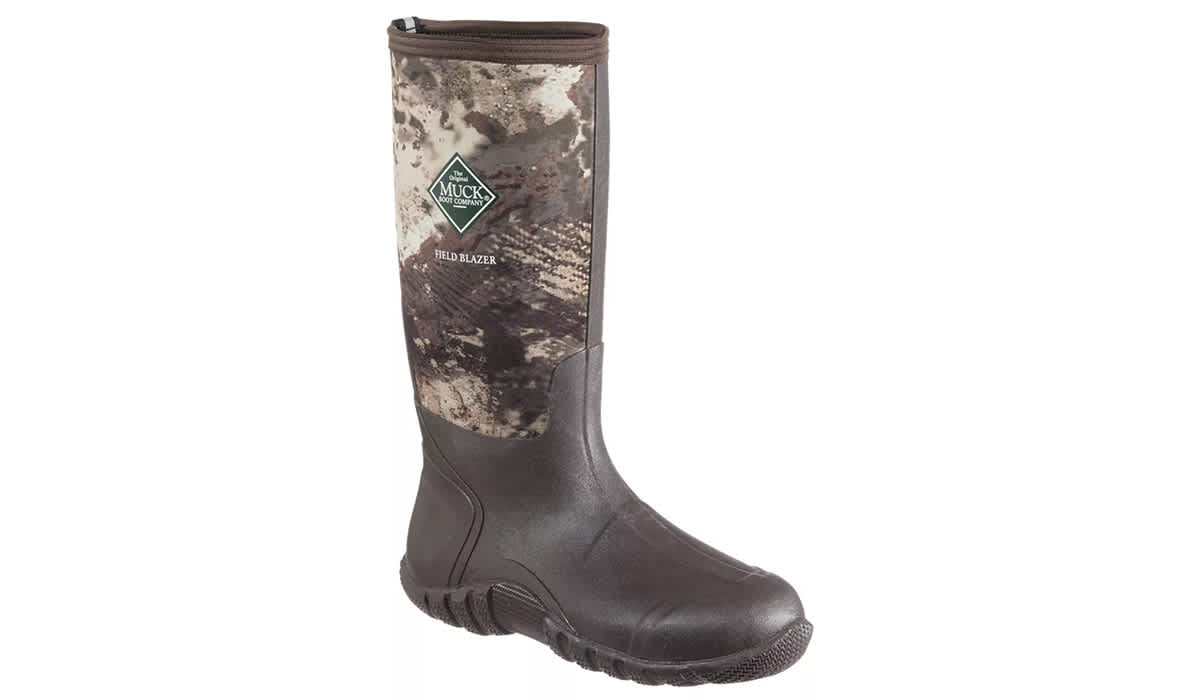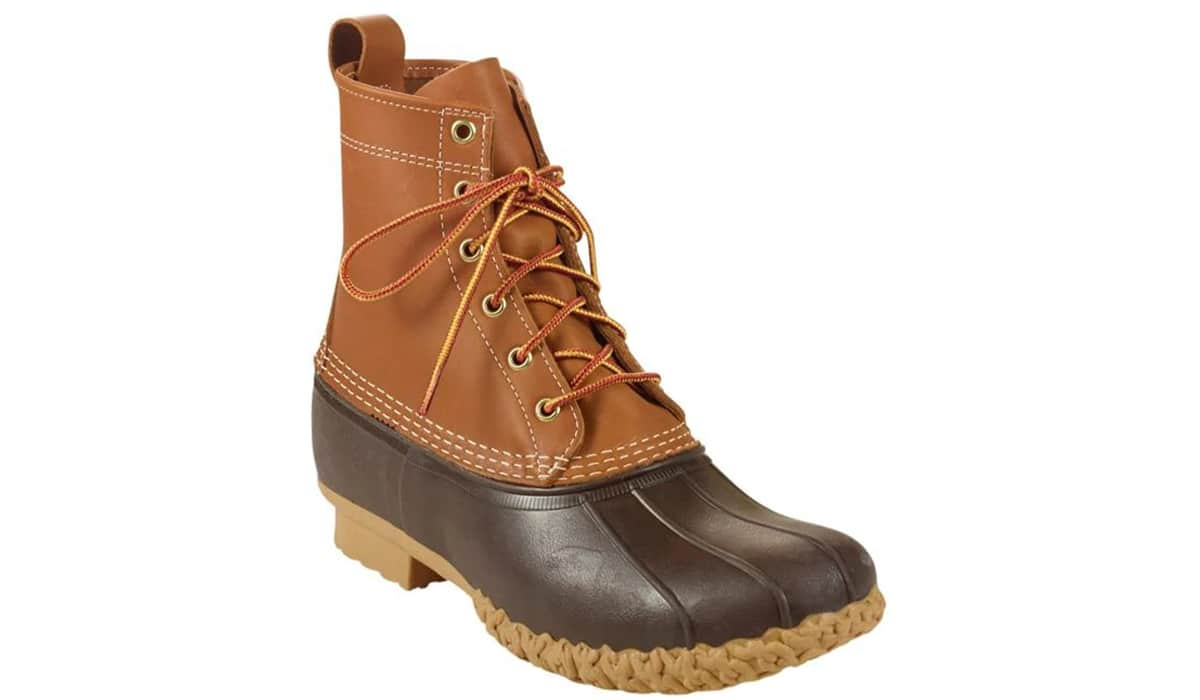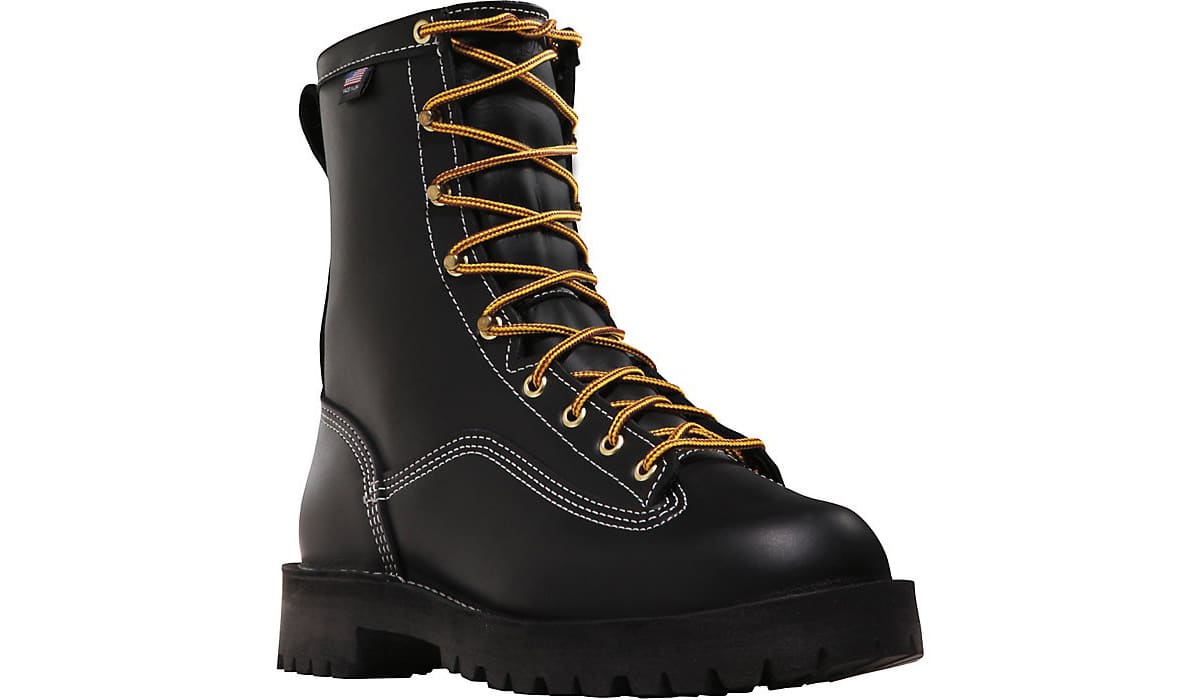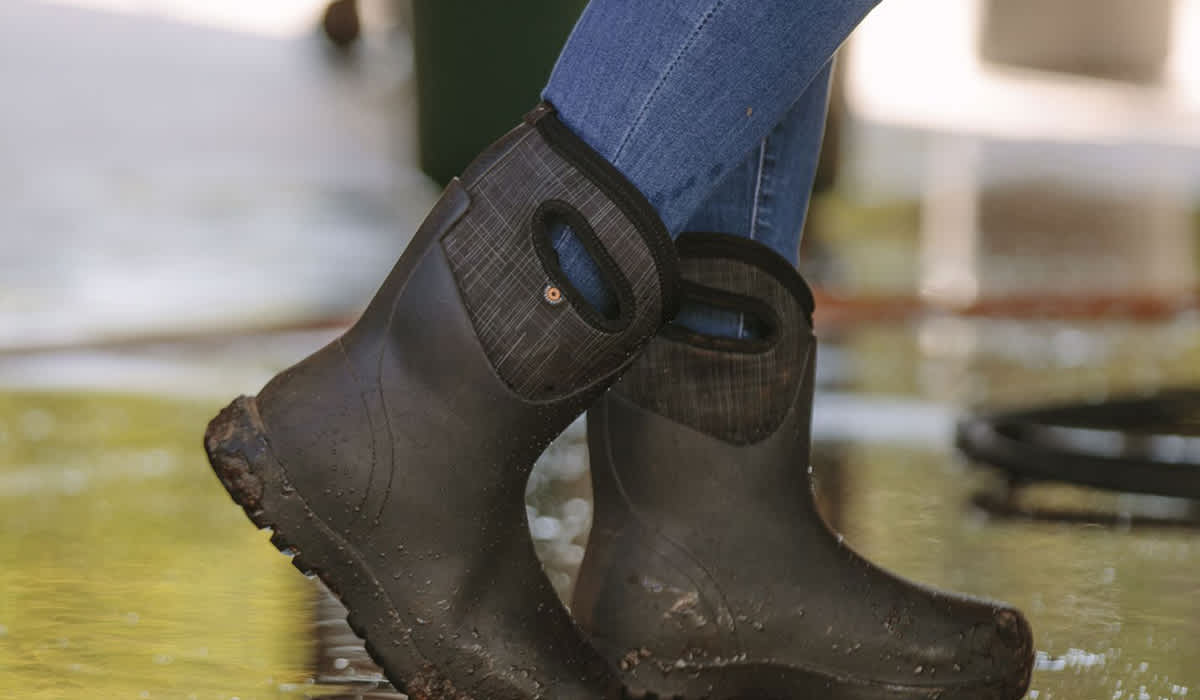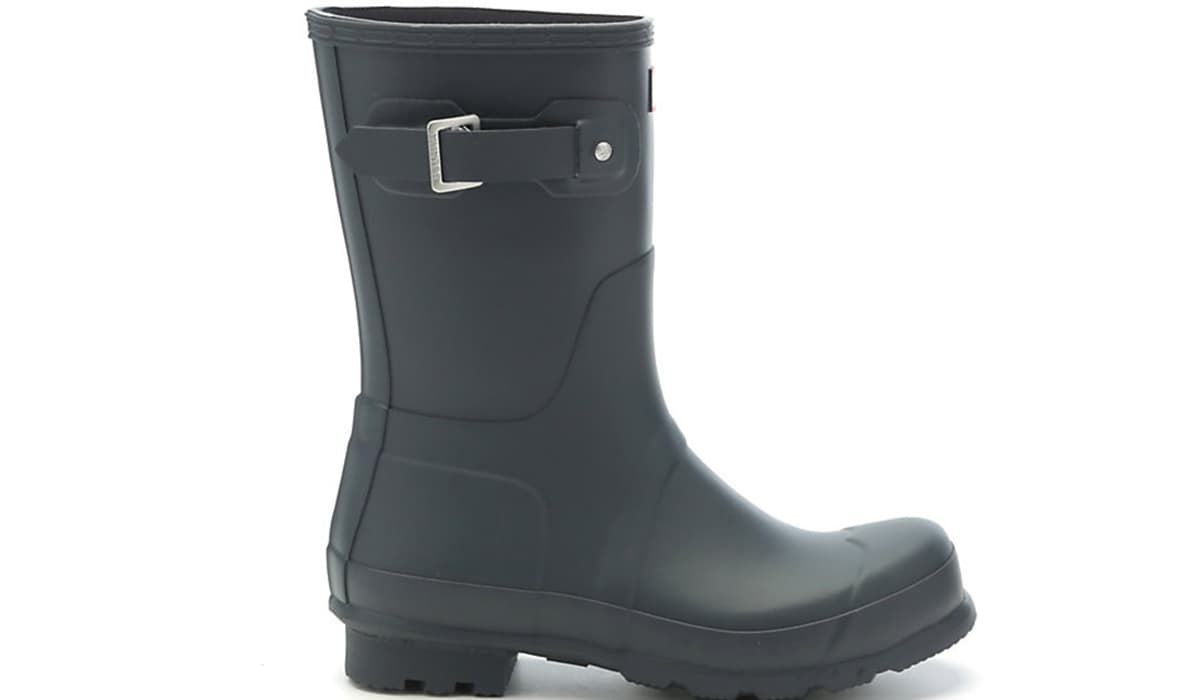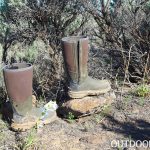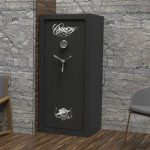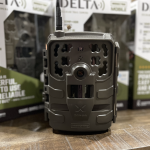Keeping Your Feet Dry with the Best Rain Boots
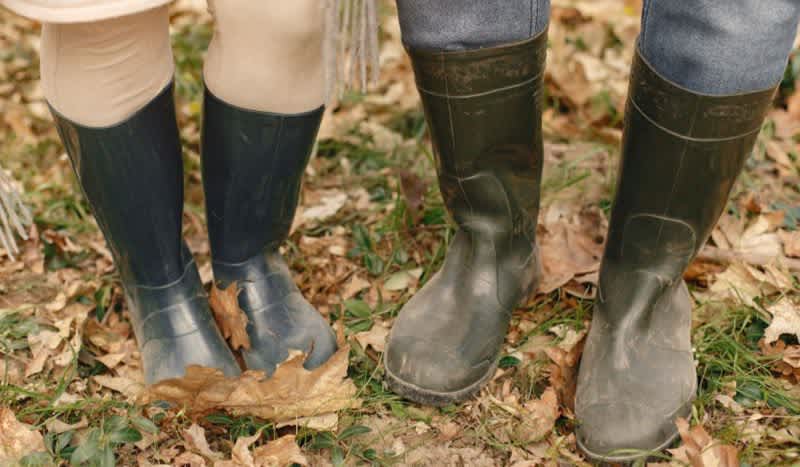
1. The Original Muck Boot Company Fieldblazer Rubber Boots - Editor’s Pick
Muck boots basically started the whole trend toward rain boots that mix traditional rubber with neoprene uppers. They have proven over the years by use with hunters and farmers alike, that they are durable and comfortable. These boots are insulated for comfort in cold weather and have an outstanding insole that supports your foot. They are comfortable from sub-zero temps all the way up to 85-degrees.
2. L.L. Bean Men’s Bean Boots 8”
L.L. Bean has a longstanding reputation as one of the best suppliers of casual outdoor gear that still remains a fashion statement. Their 8” bean boots are quite legendary for their durability and longevity as they were first introduced in 1912 by L.L. himself. Chances are if you buy a pair of Bean boots then they will be the last pair you’ll likely ever need.
The boots are still crafted in the United States from the highest quality materials and are uniquely shaped and infused with a steel shank for ankle support. The bottom rubber makes these boots completely waterproof while the upper portions of the boots are made from full-grain leather for maximum comfort.The LL. Bean Men’s Bean Boot is sold for $139.00 in sizes 7 through 14 and Narrow through Wide configurations.
3. Danner Men’s Super Rain Forest 8” GTX NMT Boot
Danner’s Super Rain Forest boot features both inner and outer moisture protection with a 1005 waterproof and breathable Gore-Tex liner combined with a full grain leather outer shell. The boots feature triple-stitching with “hyper-strong” threading to ensure maximum durability and the boots are even recraftable should you need that service offered.
The GTX NMT lineup of boots also feature a non-metallic safety toe that won’t conduct heat or cold to the feet and also exceeds the ASTM standard for impact ratings. As a final bonus, these boots are also insulated against electrical hazards that many modern workers find themselves around. The Danner Men’s Super Rain Forest 8” GTX NMT Boots are available for $389.95.
4. Bogs Men’s Classic Ultra High Insulated Waterproof Boots
Bogs are some of the most reliable and waterproof options on the market when it comes to rain boots and it has mostly to do with their all synthetic design. The boots are made from a rubber sole with an entirely synthetic high cut that is rounded out with convenient built in pull handles.
The Boots are also insulated and are advertised as being capable of insulating down to -40 degrees Fahrenheit making them some of the best all-weather boots around. The Bogs Classic Ultra High Insulated Waterproof Boots are available starting at $134.99.
5. Crocs Men’s All Cast Rain Boot - Budget Pick
Everyone is familiar with Crocs sandals but few talk about their great rain boots. Made from the same durable and waterproof material that their sandals are made from, the Crocs All Cast Rain boots are 100% synthetic and 100% waterproof. Featuring a no-leak design there are now seams for water to possibly leak through without first puncturing the boot.
These boots would work great on any fishing trip whether that’s on the shore, at the lake or on the deck of a boat. The boots feature a non-slip synthetic sole to keep your feet planted no matter the condition of the deck or dock. The Crocs All Cast Rain boot is available starting at $44.98 and comes in men’s sizes 7 through 13.
6. Hunter Men’s Original Short Boot
These “short” boots are great for a long day’s work in the rain or out in the yard. If you find yourself running into a lot of puddles or working in heavy rain, the design of the Hunter Short Boot can’t be beat. The boots feature both simple colors and simple design which includes the option to either tuck your pants inside the boot or cinch down on them and put your pants over the boot for complete water protection.
The Hunter Men’s Original Short boot comes in either black or dark olive and comes in sizes ranging between 7 and 14. The boots are available starting at $145.00. and weigh a total of 78.66 oz.
Rain boots and comfort
Rain boots have an infamous reputation of being incredibly uncomfortable – at least when I was a kid. Most classic designs of rain boots feature no insulation nor padding outside of a simple insole, and this is often due to the fact that many rain boots were designed for you to put your actual shoes inside instead of just socks. Modern Rain boots now feature padded insoles and insulating materials making them more suited to all weather use but with the added benefit of the waterproof outer shell.
Each boot is a little different, but you can plan on finding ones that fit your feet and provide enough comfort for all-day use without causing any undo fatigue or stress upon your feet.
Finding the right fit
Due to the unique nature of rain boots, they can be hard to size correctly. Generally I find that you should be able to lift your heel out of the boots no problem instead of having to wrestle with the boot in order to get it off of your foot. However, if the heel of the boot slams down on the ground (it might sound like a “flop” when you are walking then it’s safe to say they are too loose and you should go down a full size or half size if possible.
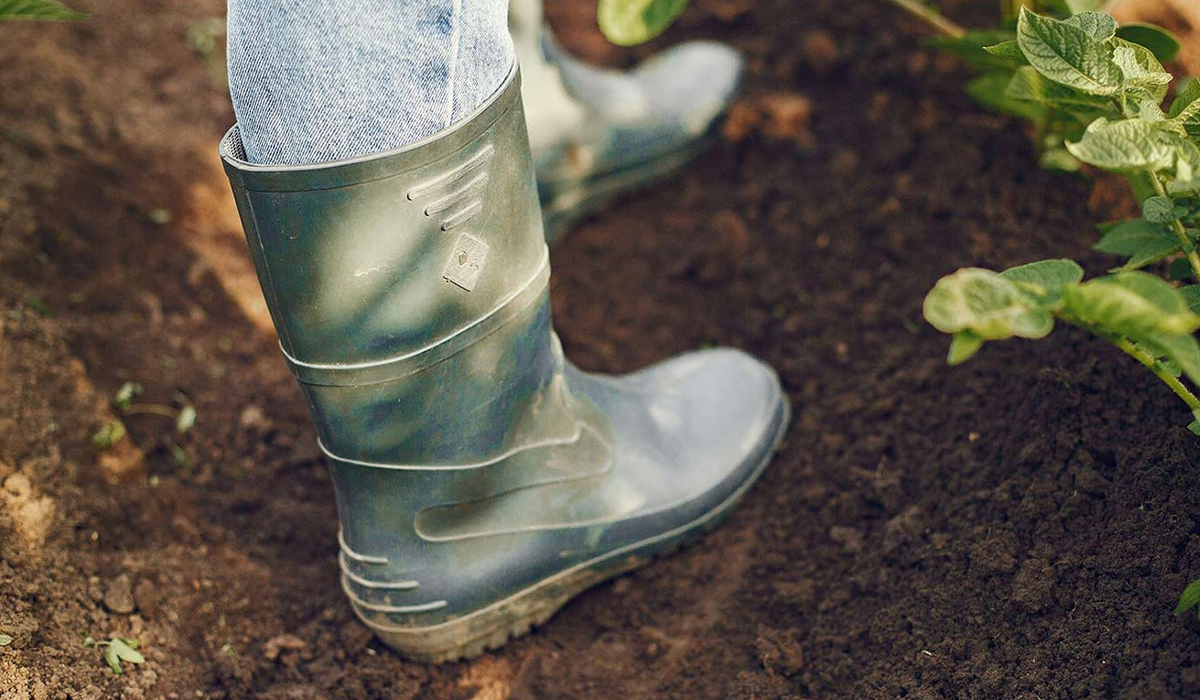
Rain boots and salt water
You should always check to make sure that your rain boots aren’t made from a material that will degrade from saltwater exposure. Normally all-synthetic boots can withstand saltwater but your mileage may vary with some rain boots that incorporate leather. If you do wear your leather rain boots in any conditions that feature salt then you’ll want to make sure to condition them as soon as possible after exposure as the salt in salt water can suck all the moisture out of the leather leaving them stiff and dry instead of supple.
Can rain boots be worn all day?
As long as they fit right, rain boots can be worn all day with no worries. You can wear them even when it’s not raining if you like. Just make sure they fit well.
Do I need to wear socks with rain boots?
Due to the materials used for many rain boots, it is recommended you wear socks, but it’s not really required.You do open the door to blisters, but it’s a personal choice.
We are committed to finding, researching, and recommending the best products. We earn commissions from purchases you make using the retail links in our product reviews. Learn more about how this works.

